Abstract
The ability of ruminal bacteria to utilize xylooligosaccharides was examined. Xylooligosaccharides were prepared by partially hydrolyzing oat spelt xylan in phosphoric acid. This substrate solution was added (0.2%, wt/vol) to a complex medium containing yeast extract and Trypticase that was inoculated with individual species of ruminal bacteria, and growth and utilization were monitored over time. All of the xylanolytic bacteria examined were able to utilize this oligosaccharide mixture as a growth substrate. Butyrivibrio fibrisolvens, Eubacterium ruminantium, and Ruminococcus albus used xylooligosaccharides and whole, unhydrolyzed xylan to similar extents, while Prevotella ruminicola used twice as much xylooligosaccharides as xylan (76 versus 34%). Strains of Selenomonas ruminantium were the only nonxylanolytic species that were able to grow on xylooligosaccharides. The ability of individual S. ruminantium strains to utilize xylooligosaccharides was correlated with the presence of xylosidase and arabinosidases activities.
Full text
PDF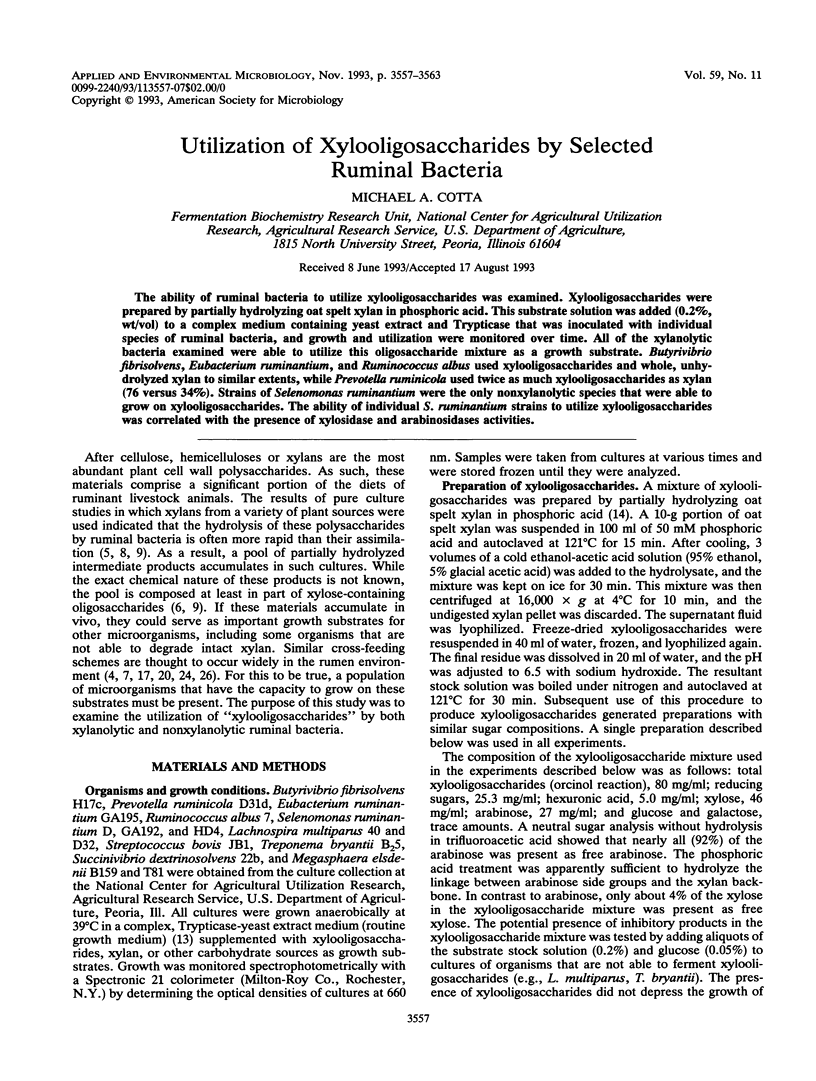
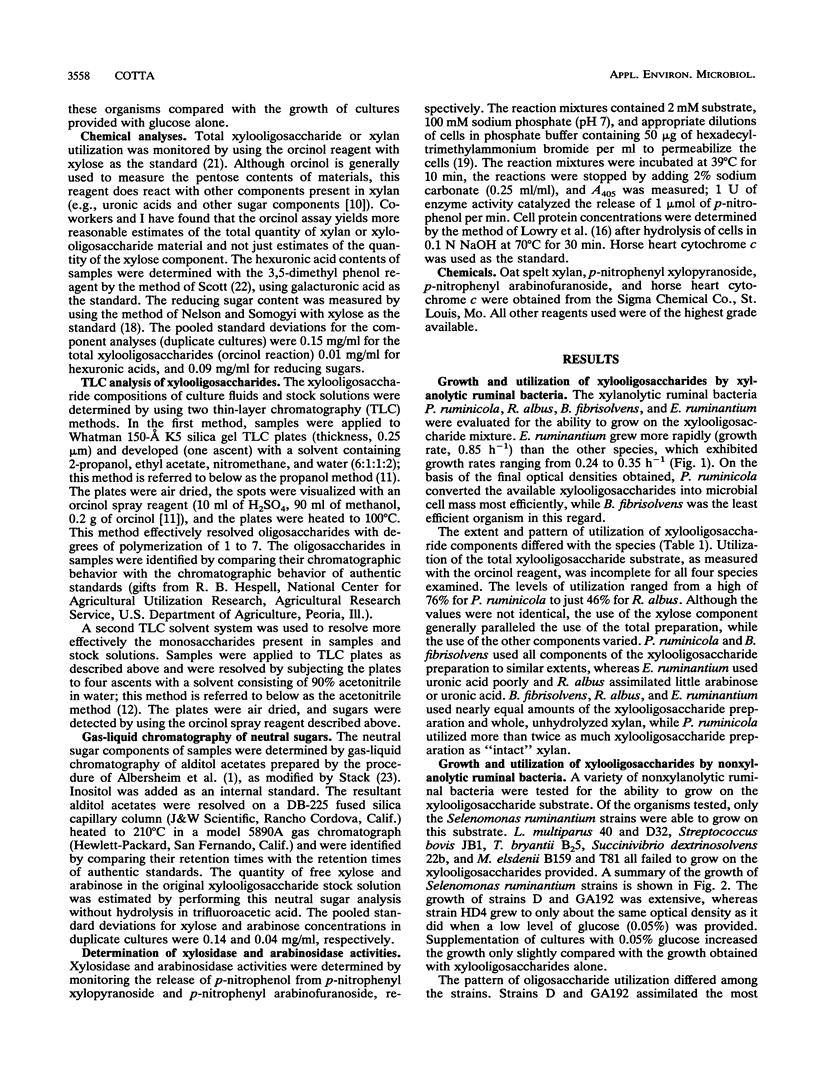
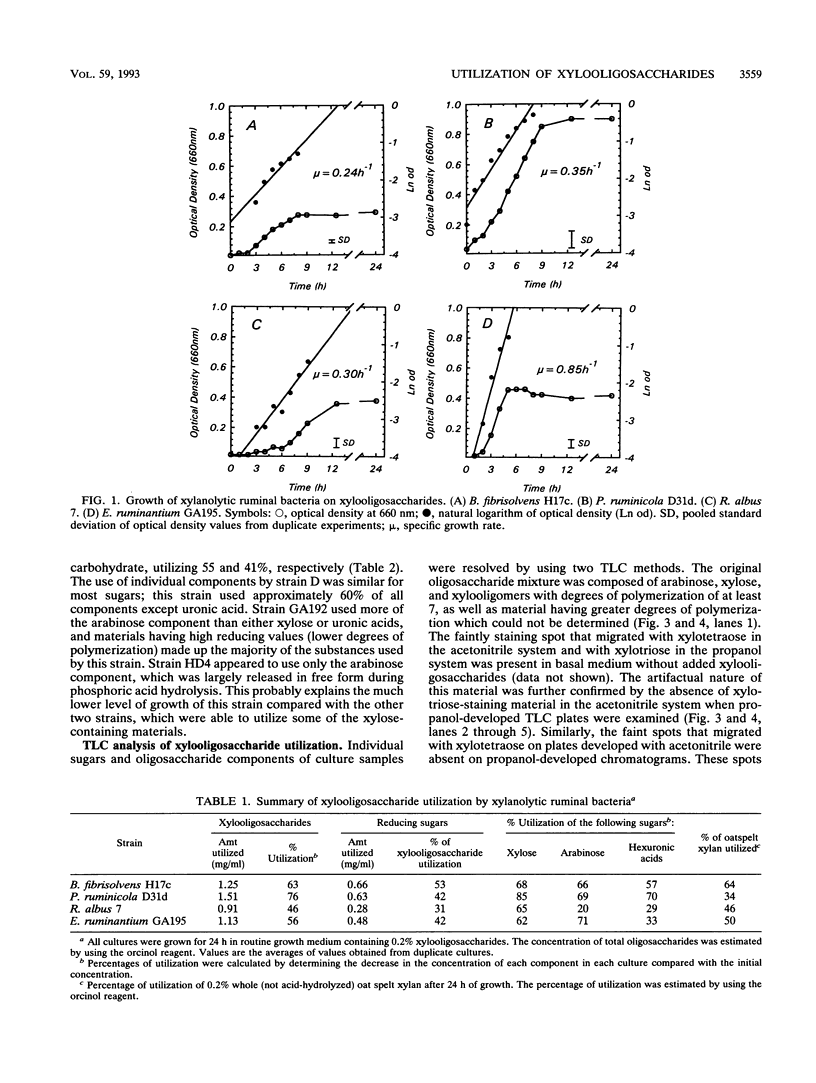
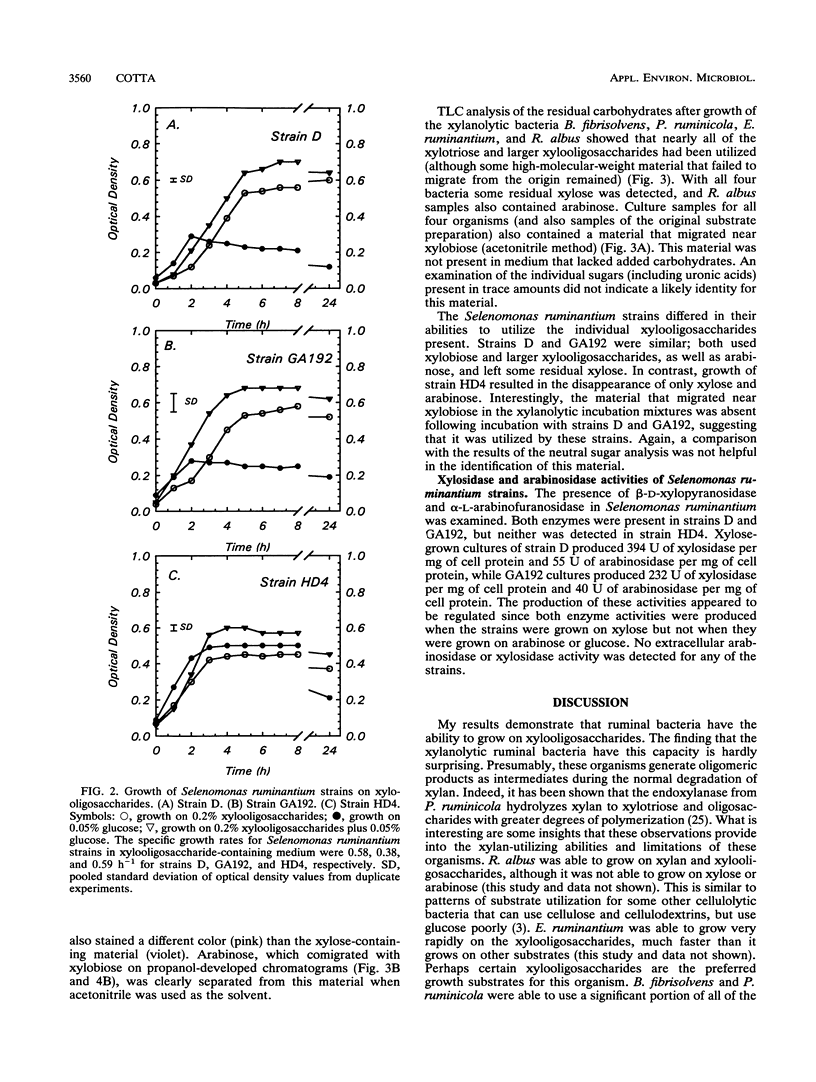
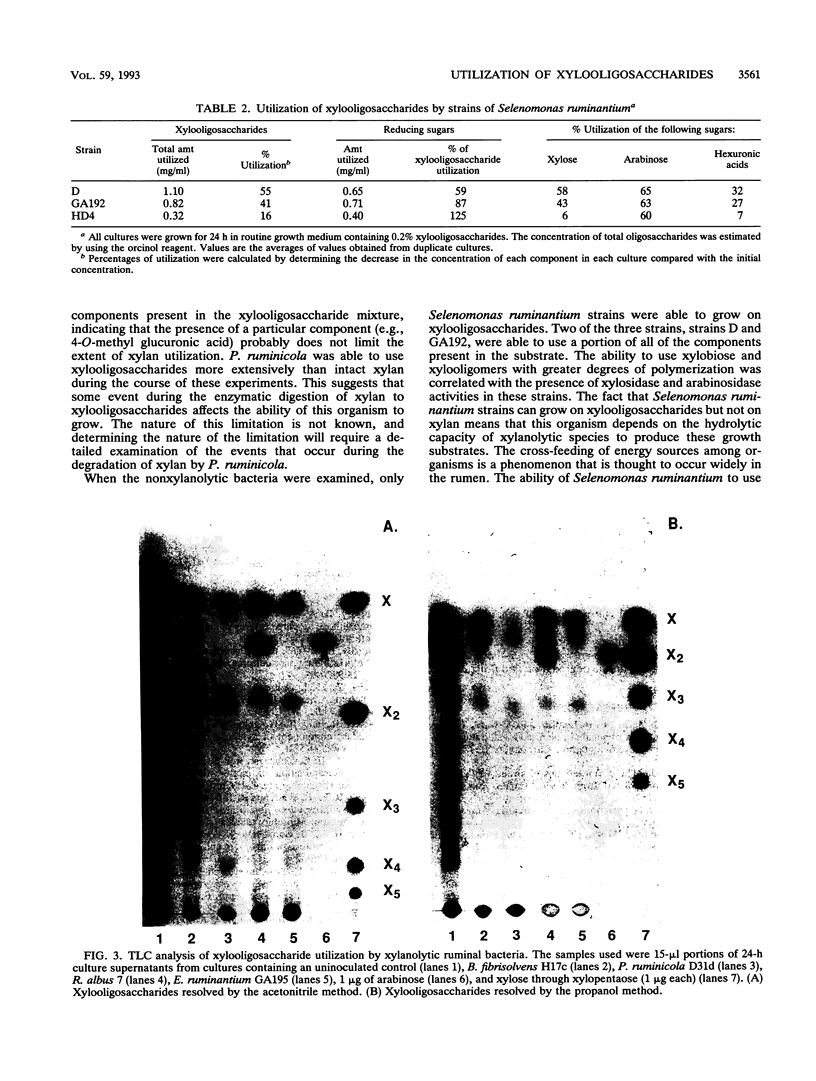
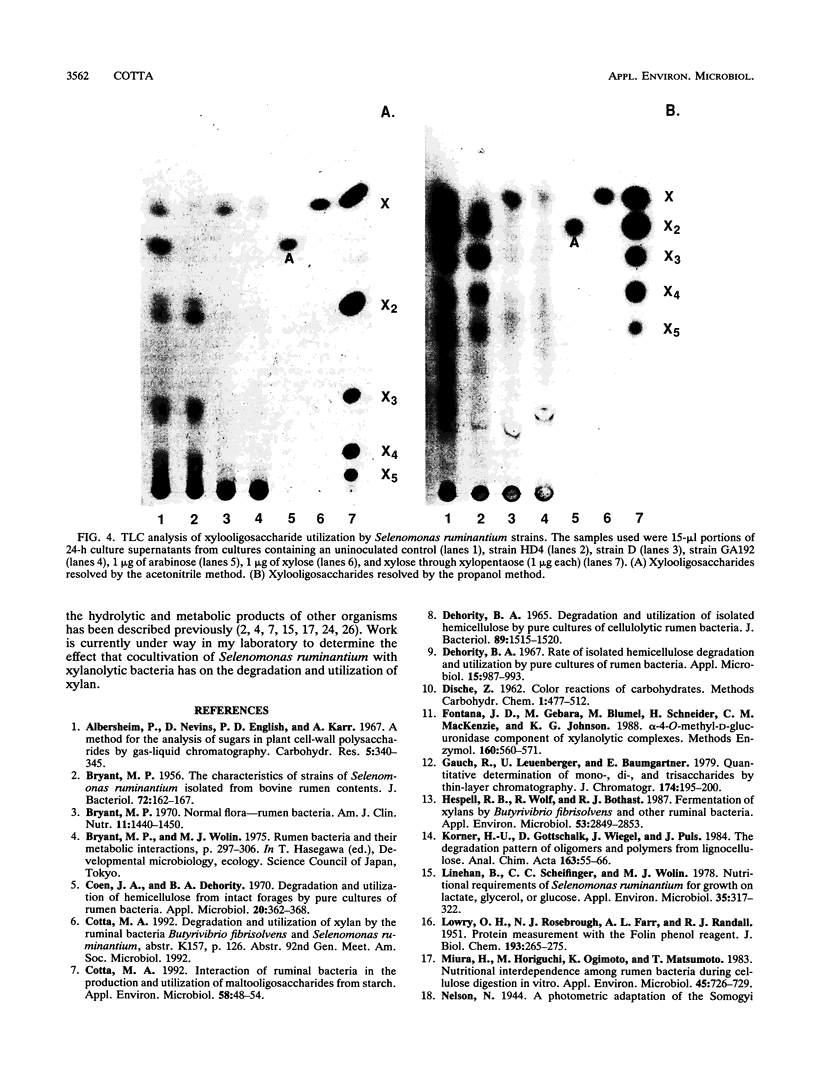
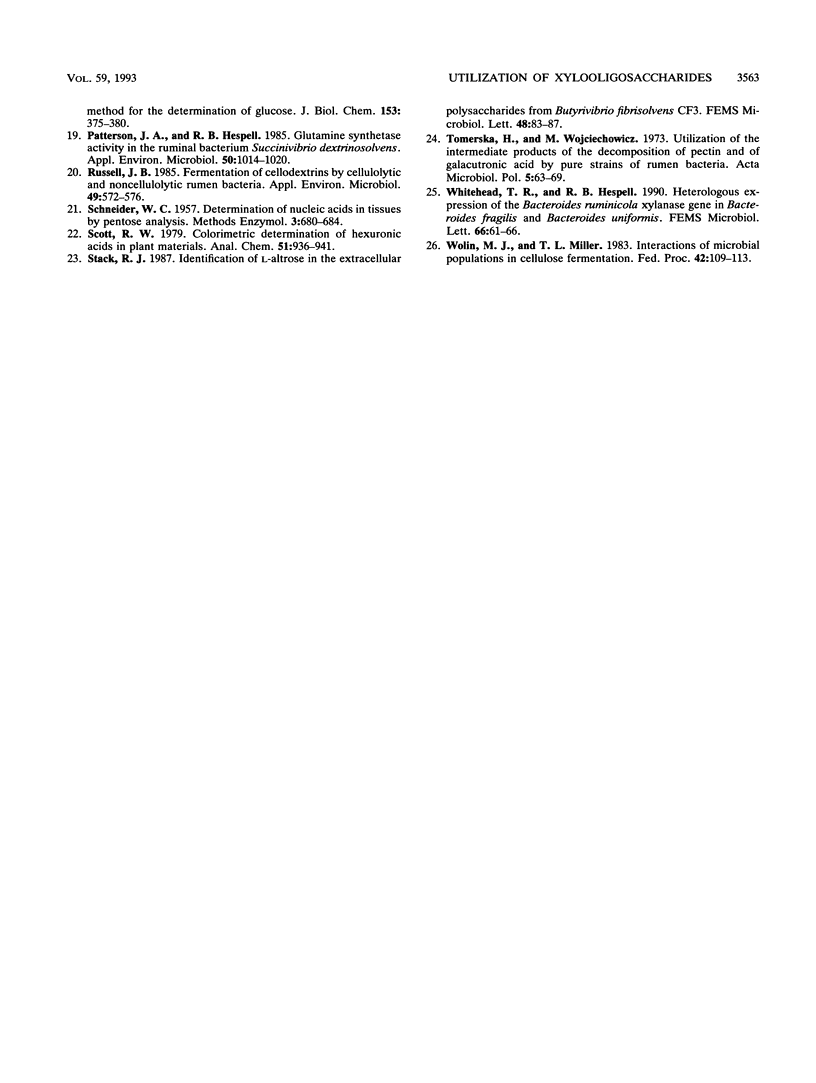
Images in this article
Selected References
These references are in PubMed. This may not be the complete list of references from this article.
- BRYANT M. P. The characteristics of strains of Selenomonas isolated from bovine rumen contents. J Bacteriol. 1956 Aug;72(2):162–167. doi: 10.1128/jb.72.2.162-167.1956. [DOI] [PMC free article] [PubMed] [Google Scholar]
- Bryant M. P. Normal flora--rumen bacteria. Am J Clin Nutr. 1970 Nov;23(11):1440–1450. doi: 10.1093/ajcn/23.11.1440. [DOI] [PubMed] [Google Scholar]
- Coen J. A., Dehority B. A. Degradation and utilization of hemicellulose from intact forages by pure cultures of rumen bacteria. Appl Microbiol. 1970 Sep;20(3):362–368. doi: 10.1128/am.20.3.362-368.1970. [DOI] [PMC free article] [PubMed] [Google Scholar]
- Cotta M. A. Interaction of ruminal bacteria in the production and utilization of maltooligosaccharides from starch. Appl Environ Microbiol. 1992 Jan;58(1):48–54. doi: 10.1128/aem.58.1.48-54.1992. [DOI] [PMC free article] [PubMed] [Google Scholar]
- DEHORITY B. A. DEGRADATION AND UTILIZATION OF ISOLATED HEMICELLULOSE BY PURE CULTURES OF CELLULOLYTIC RUMEN BACTERIA. J Bacteriol. 1965 Jun;89:1515–1520. doi: 10.1128/jb.89.6.1515-1520.1965. [DOI] [PMC free article] [PubMed] [Google Scholar]
- Dehority B. A. Rate of isolated hemicellulose degradation and utilization by pure cultures of rumen bacteria. Appl Microbiol. 1967 Sep;15(5):987–993. doi: 10.1128/am.15.5.987-993.1967. [DOI] [PMC free article] [PubMed] [Google Scholar]
- Hespell R. B., Wolf R., Bothast R. J. Fermentation of xylans by Butyrivibrio fibrisolvens and other ruminal bacteria. Appl Environ Microbiol. 1987 Dec;53(12):2849–2853. doi: 10.1128/aem.53.12.2849-2853.1987. [DOI] [PMC free article] [PubMed] [Google Scholar]
- LOWRY O. H., ROSEBROUGH N. J., FARR A. L., RANDALL R. J. Protein measurement with the Folin phenol reagent. J Biol Chem. 1951 Nov;193(1):265–275. [PubMed] [Google Scholar]
- Linehan B., Scheifinger C. C., Wolin M. J. Nutritional Requirements of Selenomonas ruminantium for Growth on Lactate, Glycerol, or Glucose. Appl Environ Microbiol. 1978 Feb;35(2):317–322. doi: 10.1128/aem.35.2.317-322.1978. [DOI] [PMC free article] [PubMed] [Google Scholar]
- Miura H., Horiguchi M., Ogimoto K., Matsumoto T. Nutritional interdependence among rumen bacteria during cellulose digestion in vitro. Appl Environ Microbiol. 1983 Feb;45(2):726–729. doi: 10.1128/aem.45.2.726-729.1983. [DOI] [PMC free article] [PubMed] [Google Scholar]
- Patterson J. A., Hespell R. B. Glutamine synthetase activity in the ruminal bacterium Succinivibrio dextrinosolvens. Appl Environ Microbiol. 1985 Oct;50(4):1014–1020. doi: 10.1128/aem.50.4.1014-1020.1985. [DOI] [PMC free article] [PubMed] [Google Scholar]
- Russell J. B. Fermentation of cellodextrins by cellulolytic and noncellulolytic rumen bacteria. Appl Environ Microbiol. 1985 Mar;49(3):572–576. doi: 10.1128/aem.49.3.572-576.1985. [DOI] [PMC free article] [PubMed] [Google Scholar]
- Tomerska H., Wojciechowicz M. Utilization of the intermediate products of the decomposition of pectin and of galacturonic acid by pure strains of rumen bacteria. Acta Microbiol Pol B. 1973;5(1):63–69. [PubMed] [Google Scholar]
- Whitehead T. R., Hespell R. B. Heterologous expression of the Bacteroides ruminicola xylanase gene in Bacteroides fragilis and Bacteroides uniformis. FEMS Microbiol Lett. 1990 Jan 1;54(1-3):61–65. doi: 10.1016/0378-1097(90)90259-s. [DOI] [PubMed] [Google Scholar]
- Wolin M. J., Miller T. L. Interactions of microbial populations in cellulose fermentation. Fed Proc. 1983 Jan;42(1):109–113. [PubMed] [Google Scholar]




